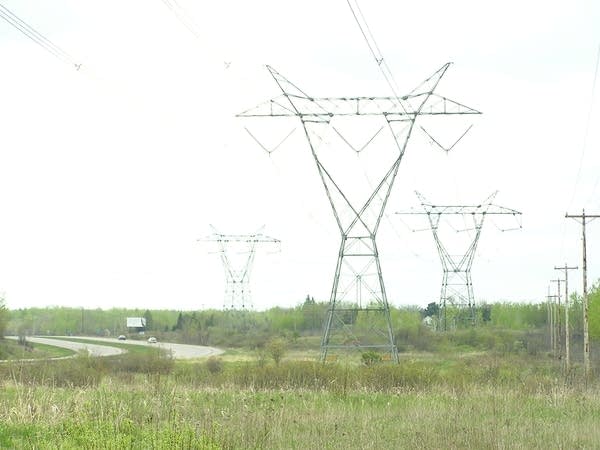MnDOT to shore up road over abandoned mine shafts
Go Deeper.
Create an account or log in to save stories.
Like this?
Thanks for liking this story! We have added it to a list of your favorite stories.

Most people on the Iron Range know that iron mining used to be an underground adventure.
Jason Richter knows that too. He's the Department of Transportation's engineering geologist in St. Paul. Two years ago he got a call from the MnDOT folks in Duluth.
"They had a collapse occur in the median, on the south side of Chisholm," Richter said. "The median had given way right between the traffic lanes on Highway 169."
What happened isn't any great mystery. That's iron mining country; just east of today's Hibbing Taconite mine. One hundred years ago the area was a hotbed for underground iron mines.
Turn Up Your Support
MPR News helps you turn down the noise and build shared understanding. Turn up your support for this public resource and keep trusted journalism accessible to all.
"We knew what caused the problem," Richter said. "The mining history is fairly obvious up there, but they kind of wanted some indication as to why it happened and if we're going to have future problems up there."
The question was: how many mines could collapse, and just where are they?
His testing gave a partial picture, indicating there were underground spaces far below the road, but it wasn't clear just where they started, or ended, or how deep they were.

As it turns out, the Department of Natural Resources had been researching the region to identify old mine shafts. The DNR's Dale Cartwright in Hibbing had been poring through old documents and maps. Historic maps could tell him just exactly where the mine shafts were -- but the maps were hard to find.
"We go out and search, you know, wherever we can find them--mining companies, Iron World is another place," Cartwright said. "The Iron Range Research Center has a lot of old maps. We did have some people come in with their old maps. Some people inherited maps from their grandparents or fathers, as well as miners who came in and kind of talked ... of how things were done."
What Cartwright found was old mines; lots and lots of them in the area. Dozens of mining companies had been digging holes in the ground.
"There's about 90 separate companies," Cartwright said.

And any of those 90 companies could have dug dozens of separate tunnels, anywhere from 50 to 70 feet below the highway.
"In some areas, especially south of Chisholm, [there were] extensive underground workings," Cartwright said.
They even sent a camera into a couple of tunnels, according to MnDOT's Jason Richter, although, what they found wasn't as exciting as it might sound.
"There wasn't a lot to be seen except a lot of the rock that had fallen off the ceilings within the tunnels," Richter said.
They didn't spot any old pick axes or the bones of long-gone miners.
"There was some wiring that we saw that probably had something to do with the lighting that they had down there," Richter said.
So, with the problem confirmed, what do you do about the highway? A tunnel collapse 50 feet below could create a dangerous depression in the pavement.
The answer, according to MnDOT engineer Mike Tardy in Duluth, is a super-strong highway that can bridge a collapse underneath.
"It'll be a doubly reinforced concrete section approximately 12 inches thick," Tardy said.
That means it will be a very strong section of road - so strong, Tardy said, it can stay in place even if the earth below goes away.
"We're designing the pavement to be able to bridge or span a depression that would be at least 24 feet wide," Tardy said. "That's essentially the width of the pavement."
And this won't be just any concrete. This will be smart concrete.
"When there is any movement in the pavement there will be a sensing system," Tardy said, "and that detects the movement, and will send an alert to us so we can get out immediately and inspect it [to] see what the situation is."
Tardy said work will begin around mid-May, and be finished by winter.
And yes, you can expect some traffic slow downs this summer on Highway 169 near Chisholm. But that's probably better than driving into an old collapsed mine.
Dear reader,
Political debates with family or friends can get heated. But what if there was a way to handle them better?
You can learn how to have civil political conversations with our new e-book!
Download our free e-book, Talking Sense: Have Hard Political Conversations, Better, and learn how to talk without the tension.





